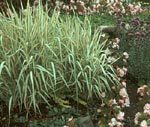Understanding Ornamental Grasses
With the popularity of ornamental grasses and their use in the landscape, it is a good idea to understand how these plants grow. This understanding will lead to better use of these plants and often avoid disappointment or frustration. Grasses respond and start to grow based upon temperature. Some grasses will start to grow in early spring when temperatures are still cool and others will wait until the soil is warm and temperatures are more stable.
Cool Season Grasses
Cool season grass will start to grow early in the spring and may even remain semi-evergreen over the winter. Cool season grasses also seem to do better and have better foliage quality when temperatures are cool or if they are given sufficient water during drought periods. If they are not watered during drought, they tend to go dormant resulting in brown foliage. These grasses may require more frequent division to keep them healthy looking and vigorous. If not, they tend to die out in the center. For the ones that remain semi-evergreen, you should only cut off the brown or winter injured foliage in the spring. Some of the more popular cool season grasses include, Fescues, Blue Oat Grass (Helictotrichon), Tufted Hair Grass (Deschampsia)
Warm Season Grasses
Warm season grasses will do better during warmer times of the year and remain good looking even when temperatures are high and moisture is limited. Warm season grasses do not begin to show growth until the weather becomes stable and the soils warm. The previous seasons growth usually browns out in the fall requiring the cutting back of plants to about 4-6 inches in the spring. Warm season grasses usually do not require as frequent division as cool season grasses. Some warm season grasses include Northern Sea Oats (Chasmanthium), Japanese Silver Grass (Miscanthus sp.), Hardy Pampas Grass (Erianthus), Perennial Fountain Grass (Pennisetum) and Switch Grass (Panicum).
Growth Habits
Before planting you should also understand the growth habit of the grass. Grasses can be either clump forming or rhizome forming. The latter is often called "running" grass. The clump forming grasses will grow in very nice, neat mounds or clumps. They tend to mix very well with other perennials and will not become invasive. They will increase in girth slowly over time. The rhizome forming grasses spread by underground stems and can become very aggressive and invasive. These grasses have their place but it may not be in a well-tended perennial border since they can soon take over an entire area. Before selecting a grass, be sure to understand how it grows so you won’t be planting a future problem.
|
 |
| Cool Season Grasses |
|
|
 |
| Grass Growing Habits |
|
|
|